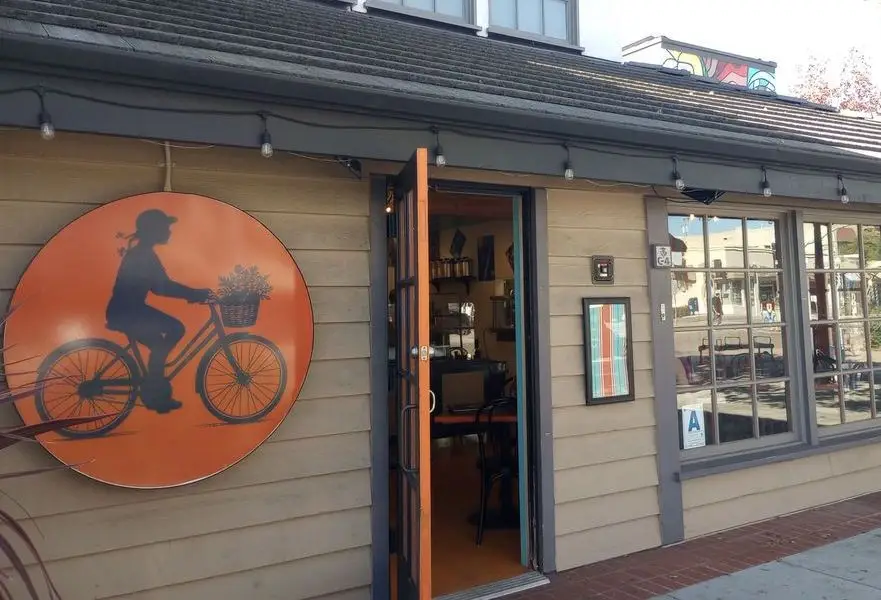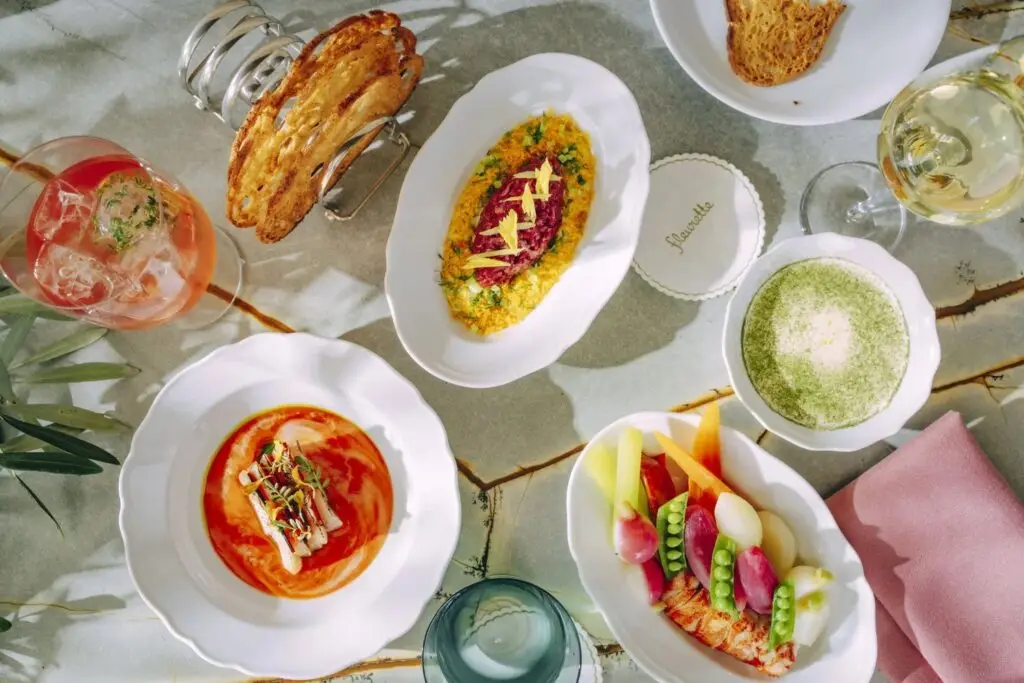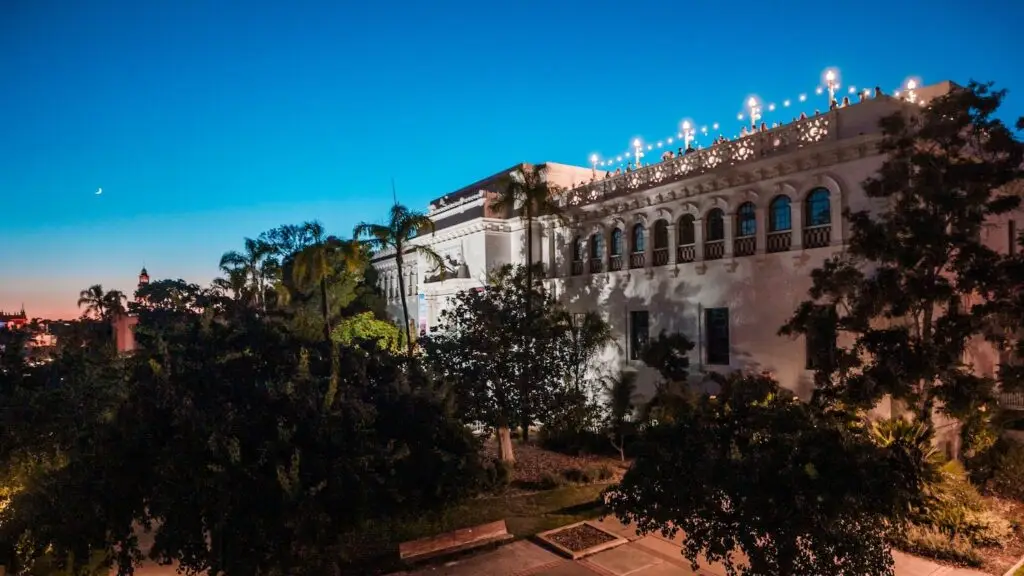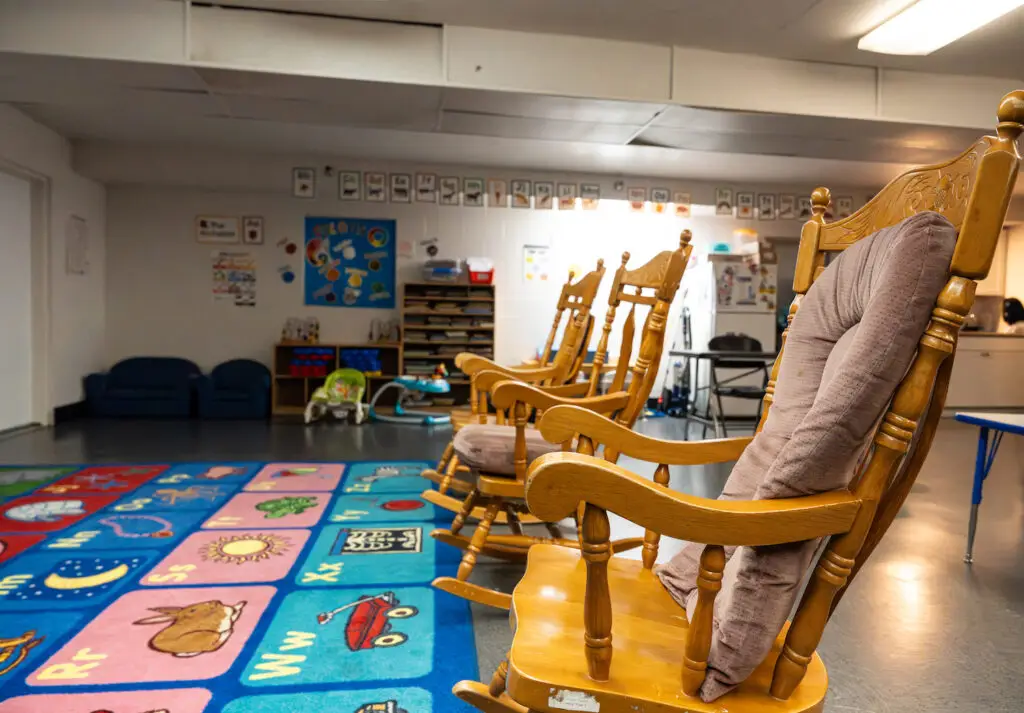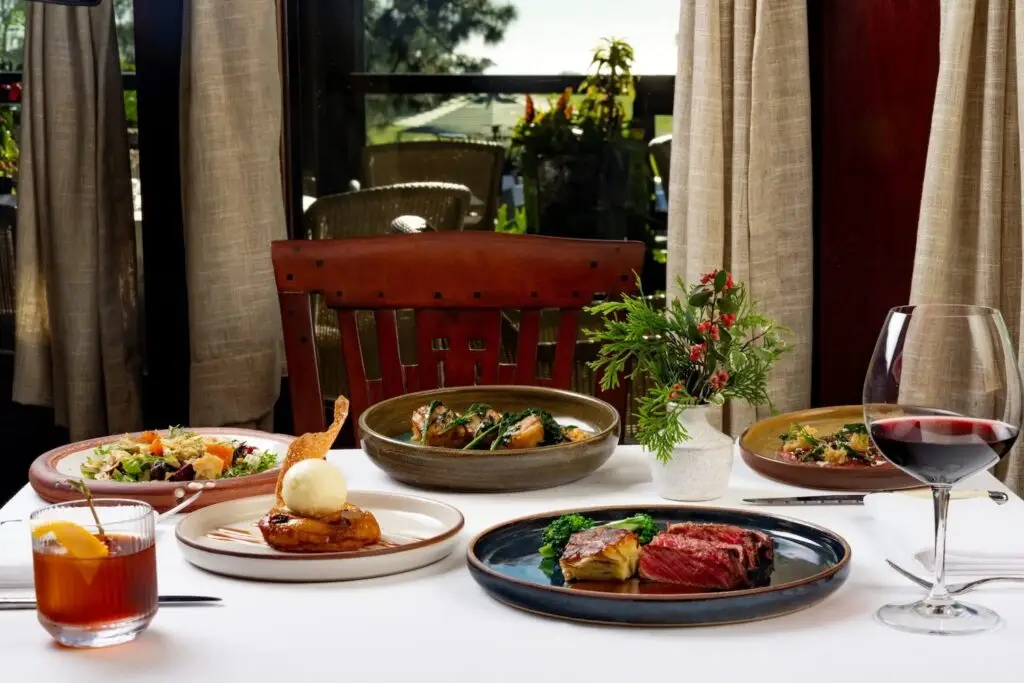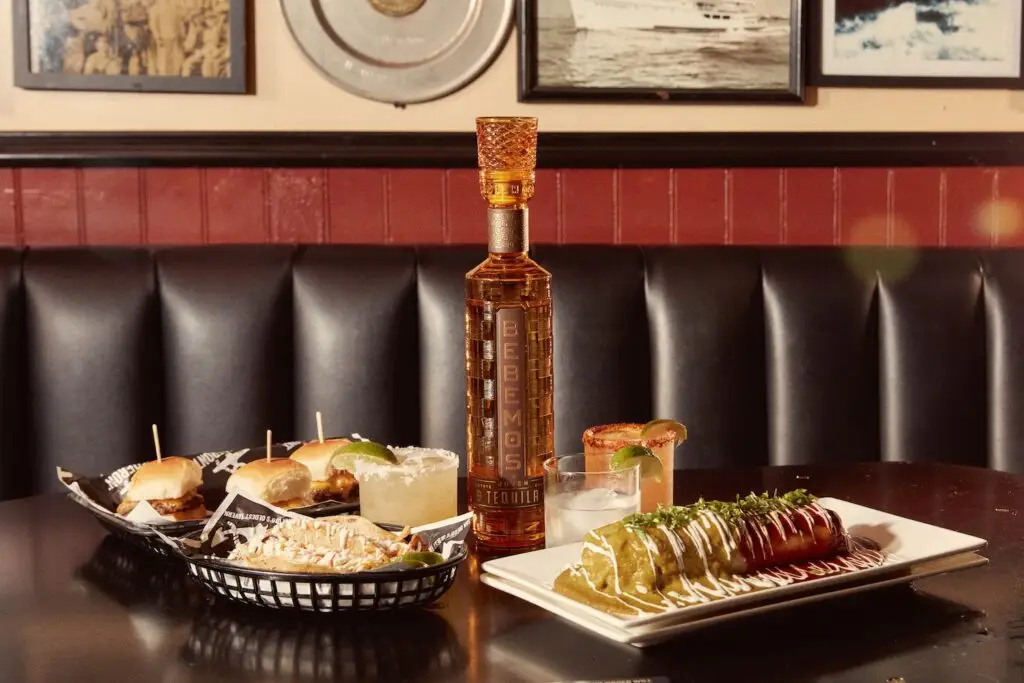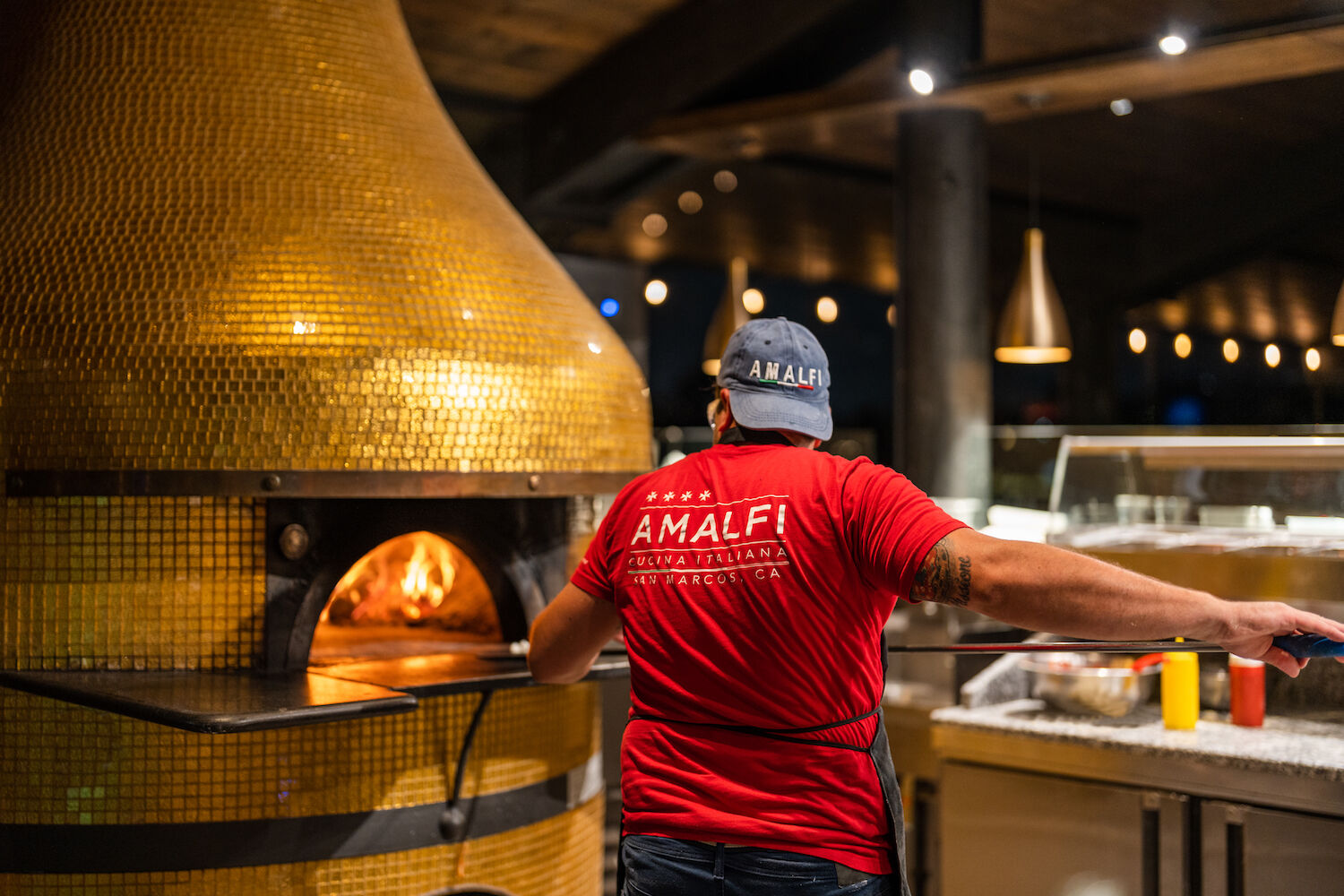
The famed Stefano Ferrara pizza oven burns anywhere from 700 to 1,000 degrees.
Photo Credit: James Tran
This lake has racy secrets. I can just tell. It’s lined with unassuming single-story homes that have their own tiny docks, pontoon boats moored until the next martinis. Martinis tend to be plural on lakes. A giant inflatable unicorn suns in one of the yards, its vinyl rainbow mane lightly bleached. In the middle of the lake, a 30-foot-tall fountain blooms, like an indie version of the Bellagio water show. There is a man standing in a gondola with a striped shirt and a flat-brim hat, guiding his love canoe with his love oar. I call down to ask him how big the lake is. Says about a mile. Says there’s a little waterfall at the end. Says for a price he’ll show me a sunset.
I have wandered onto the set of Ozark. It all feels too suspiciously idyllic and hidden in plain sight to not have one or two versions of Jason Bateman running illicit lake schemes. Someone tells me Lake San Marcos is unincorporated, a word that’s always had an appealing “Timothy Leary of real estate” ring to it. No boat is allowed to have an engine over 9.9 horsepower, so it’s a nice, safe lake full of buoyant golf carts.
Forty-eight years a native and I’ve never been here. How did this manmade wonderpond of suburban serenity escape me for so long?
The puffy unicorn suggests a younger crowd is moving into Lake San Marcos, which has primarily been a golden-aged community. To be fair, it still has a strong elder scene, but an influx of new blood is also suggested by the fact that I’m eating some bruschetta and drinking a gigantic Aperol spritz on the deck of an impressive modern restaurant—Amalfi Cucina Italiana—overlooking the man in the love boat trying to sell me sunsets.
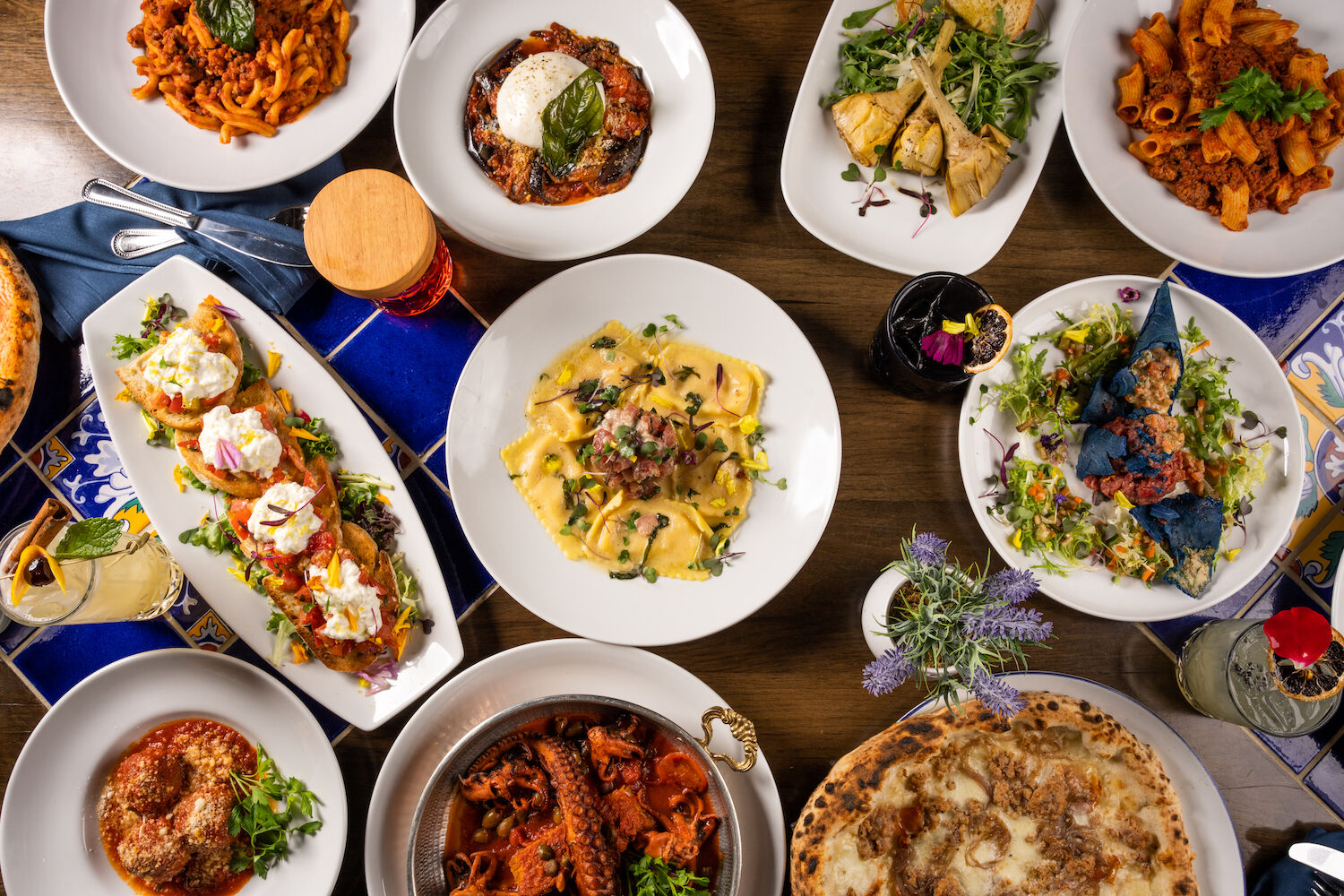
From the coast of Amalfi to the coast of San Marcos—a feast.
Photo Credit: James Tran
Lake San Marcos was created in 1946 when the landowner built a 50-foot dam on San Marcos Creek so he could have year-round access to water for his onion, tomato, and walnut crops. In the late ’50s, the lake was bought by three brothers—Bob, Don, and Gordon Frazar. More than a few thought Gordon (the lead dreamer) was nuts—a neighborhood on a glorified pond? A community in a then-rural area too far from San Diego and much too far from LA? They drained the lake, increased its size to 80 acres, and built the first master-planned lakeside development in California (also one of the first in the country). It was the first housing community to have built-in cable TV (no gaudy antennas on rooftops), and one of the first to have all utilities underground.
They put in a couple golf courses, a community center, and a grand two-story restaurant hanging over the water (originally called The Quails Inn, now Amalfi). They filled the lake with bass. The first houses were sold in 1963 for $30,000. And by god, it worked. Locals called it “the compound.”
Over the decades it’s had its share of issues. Mostly with water quality, due to agricultural runoff and algal blooms. The water can look muddy in spots and the algae can stink. It’s no Crater Lake. But in recent years a few municipal entities have taken to cleaning it, adding water purifiers. On the two days we dine here, the only scent we catch is the lusty musk of wood-fired pizza.
Imperfections aside, I love it here. Far as I’m concerned, this is boat-ramp La Jolla.
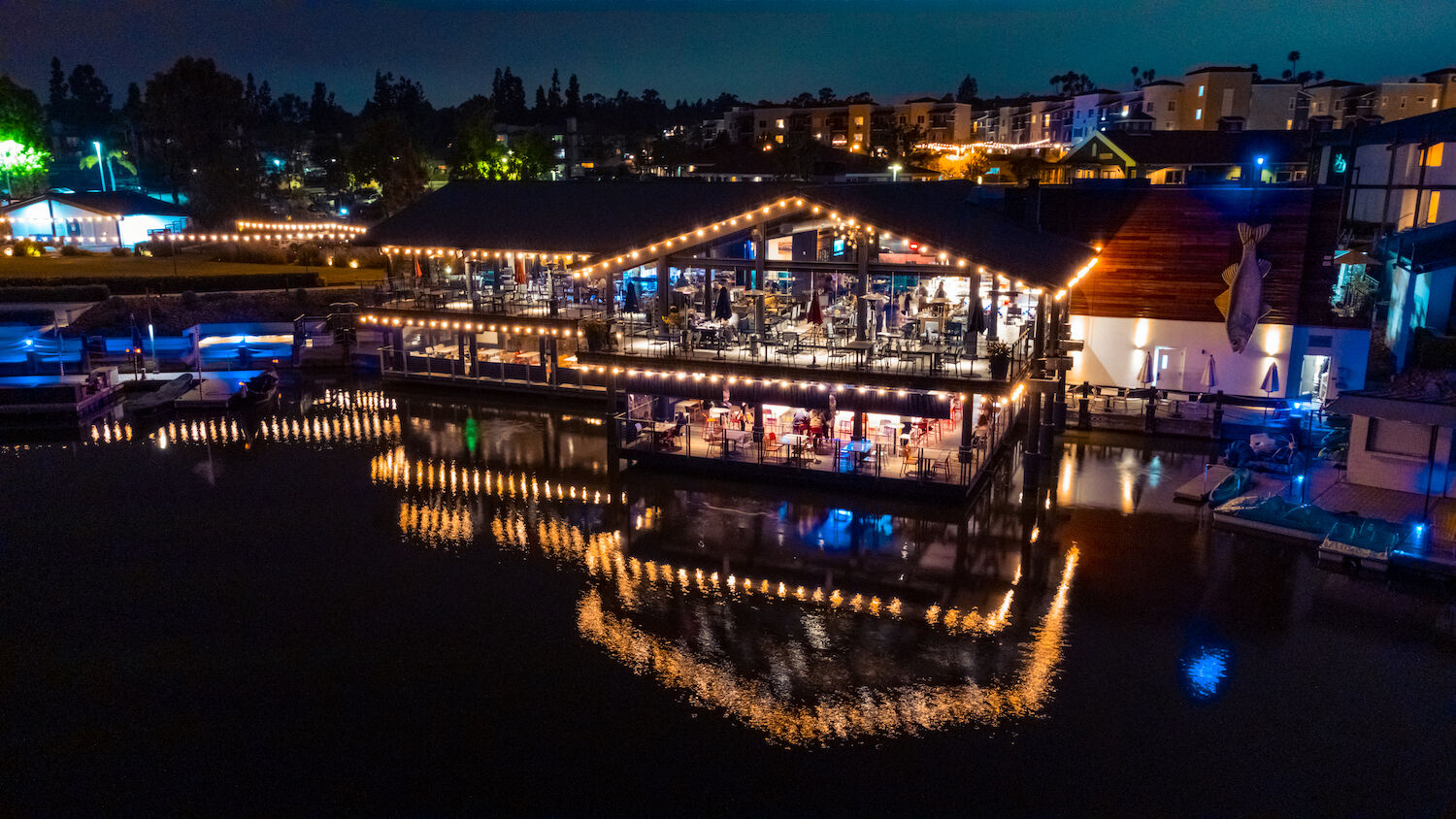
Amalfi lit up at dusk for the martini pontooners.
Photo Credit: James Tran
I also love Amalfi’s artichokes. Full stalks and hearts and tender leaves, lightly pan-fried in olive oil and served on a bed of arugula and shards of Grana Padano Parmesan.
The dish looks spartan, like just a few great things rested on a plate. But it’s incredibly delicious, proof that sometimes the best cooking technique is restraint. Amalfi imports them from Civitavecchia, Rome. In Rome, artichokes rank somewhere between carbonara and the Pope.
Amalfi opened here in summer 2020, a timing best described with many curse words. And yet, here they are. The main dining room—with its window-rich A-frame overlooking the lake—is jammed on a Saturday for lunch, packed for Tuesday lunch, stuffed for Wednesday dinner. This fact isn’t surprising given the team: four Italian friends and former leaders of the Buona Forchetta group. Chef Marcello Avitabile was the executive chef of Buona Forchetta, and is a five-time World Pizza Champion.
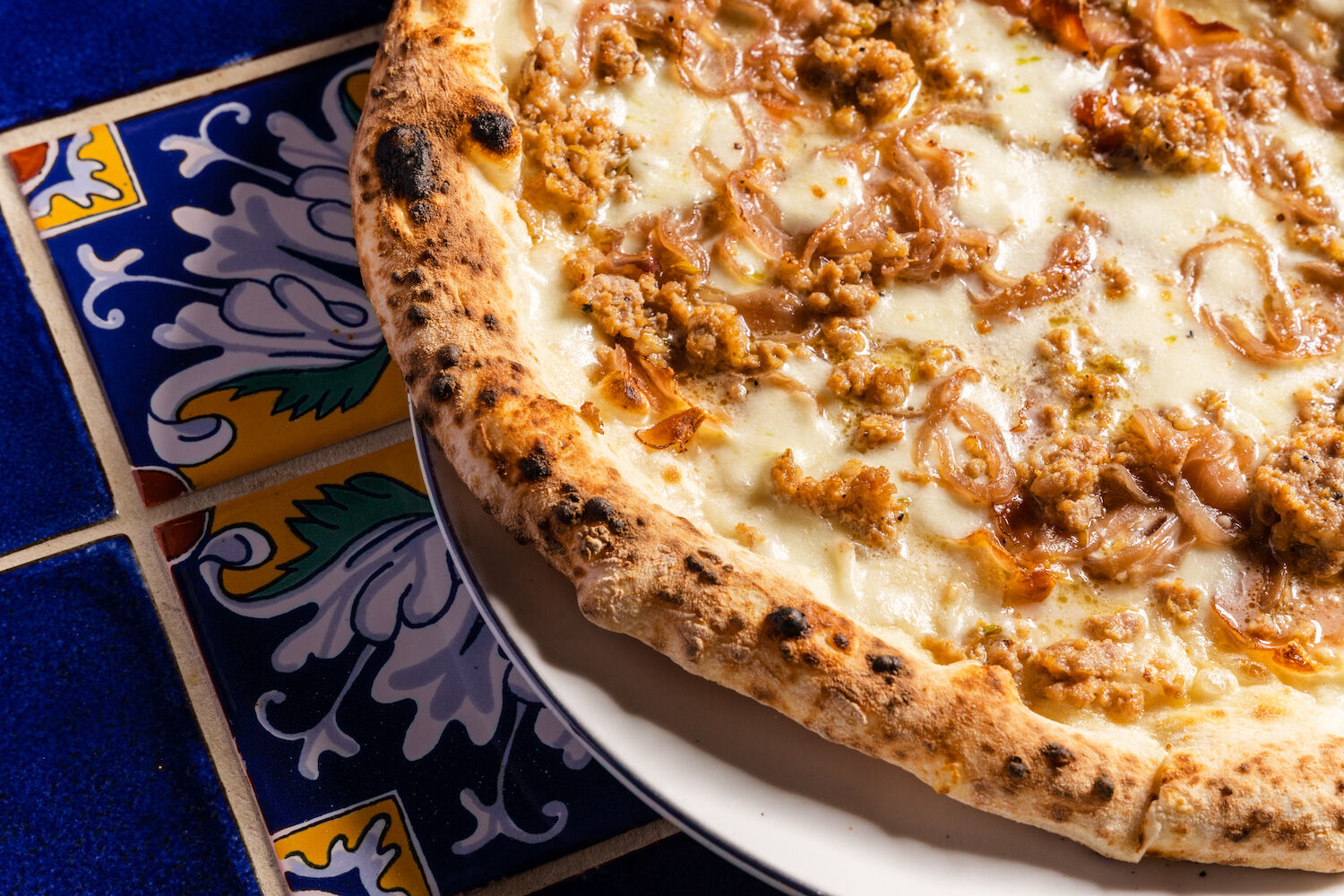
Some pretty famous Italian speck and sausage on a blistered pie.
Photo Credit: James Tran
Visitors see his oven when they first walk in—a custom Stefano Ferrara (the Ferrari of pizza ovens) built in Naples, golden tile, formidable, hot as hell, designed to do one thing perfectly in its lifespan. So no surprise Amalfi’s pizza is instantly in any “what’s your favorite in the city” conversation, thin crusted, leopard spotted, laden with famous ingredients. For instance, the Valtellina has speck imported from Alto Adige Sudtirol, the revered mozzarella provola di Agerola, Brie, caramelized onions, and Italian sausage flown in from Campagna. Or just get a Margherita, or have them stick a plain dough circle in the oven and eat the crust by itself. It’s that good.
Amalfi is far more than a pizza joint with fancy light fixtures. It’s a whole ode to the culinary scene of the Amalfi coast, with housemade pastas, apps, seafood, and specials. Start with the fried eggplant, tossed with San Marzano tomato sauce and topped with burrata cheese—a recipe that’s been passed down through Chef Avitabile’s family for three generations. The bruschetta is bright and beautiful, even if I wish it were toasted more—baked in the wood-fired oven, spread with burrata, topped with heirloom tomatoes, Meyer lemon zest, and olive oil chosen by Italians who know what great olive oil tastes like. The team grinds the beef for their polpette (meatballs) in house, but the key is that sauce. The meatballs rest in the San Marzano sauce for hours, trading flavors back and forth until everything is right in the world.
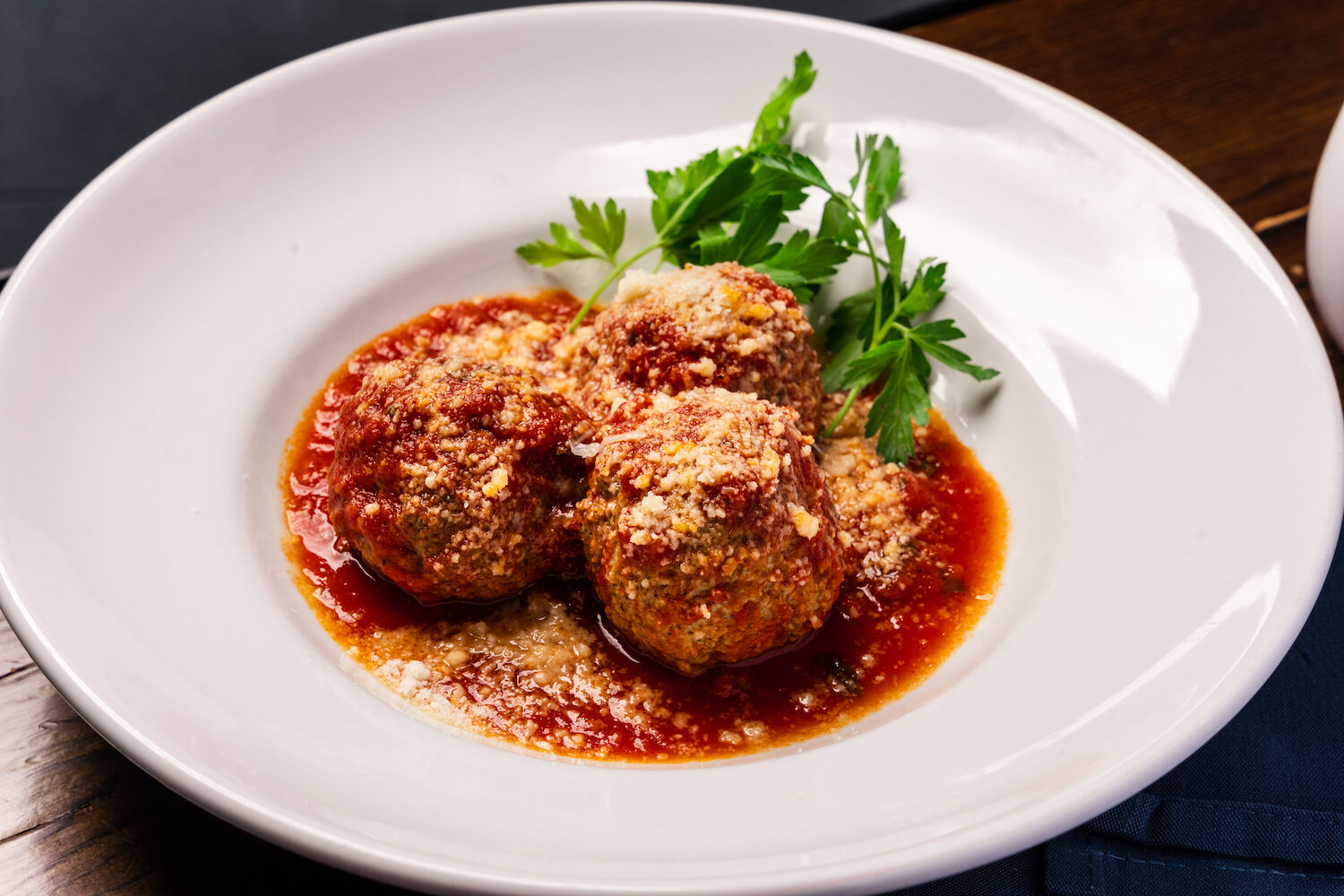
The house-ground meatballs rest in San Marzano sauce for hours, trading secrets.
Photo Credit: James Tran
The pizza in a jar is cute, but it’s a bit of a jumble. I don’t care if the pizza is on a plate or in a jar or on a bed of $100 bills, but I’m a stickler about wanting char on that crust and I didn’t get any. I calmed down about this immediately when I saw just how massive their bar program is—cocktails and Italian wines and beers of all stripes. It’s part Italian restaurant, part beverage emporium. Try the Amalfi Spritz (Aperol, Solerno blood orange liqueur, Prosecco, soda water) or the Four Seasons (Bacardí Superior rum, Giffard pamplemousse, cinnamon-bark syrup, lime, pineapple, and a stick of torched cinnamon).
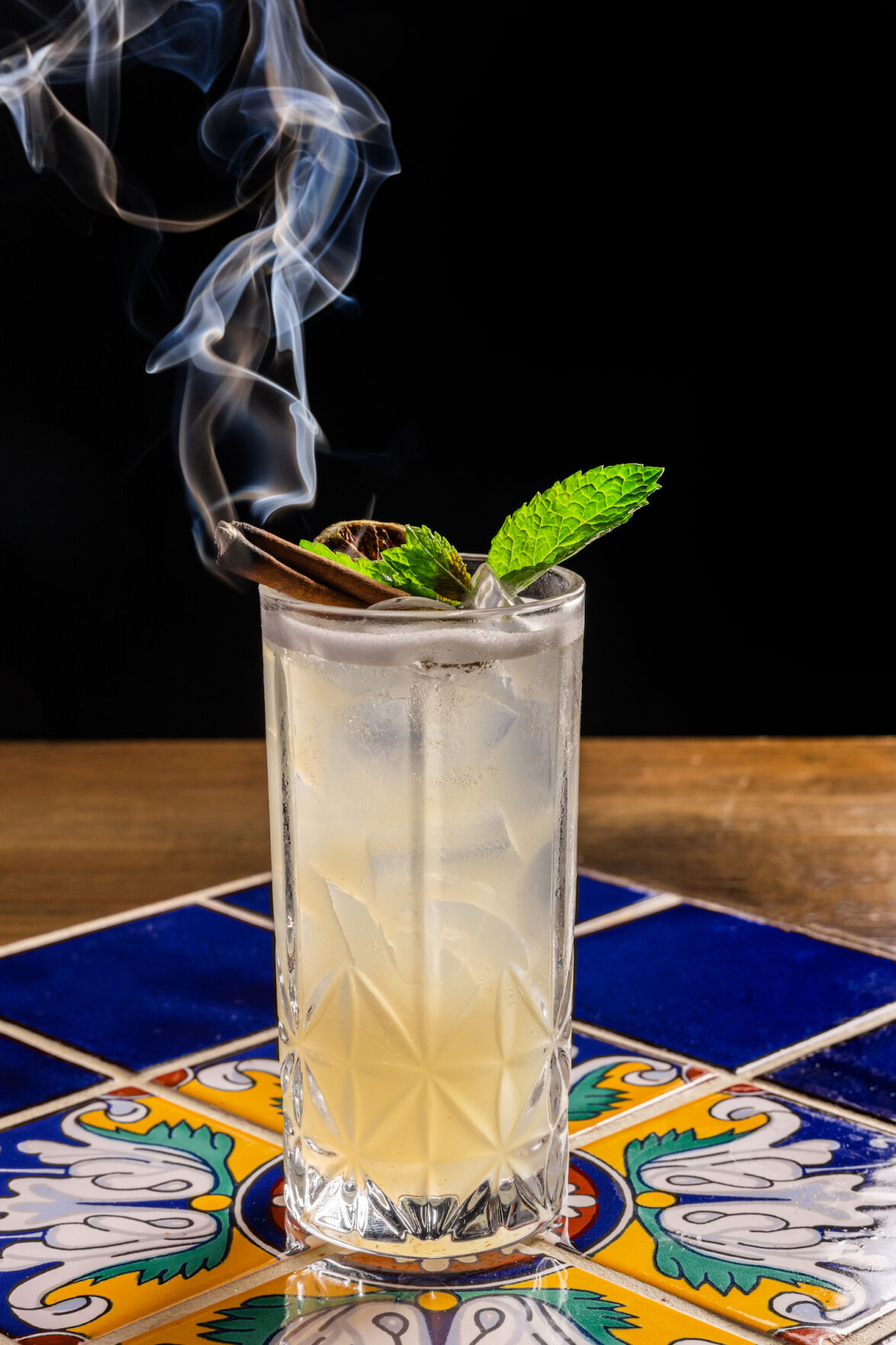
Mind if we smoke? The Four Seasons cocktail is rum, grapefruit, cinnamon-bark syrup, lime, and pineapple, topped with torched cinnamon.
Photo Credit: James Tran
For seafood, the dish that sounds terrible on paper but absolutely works is the ravioli—filled with shrimp scampi and Buffalo mozzarella, then sautéed in a pan with butter and basil. The intimidating part is that they then airlift a whole heap of Baja ahi tartare atop. Sounds odd, but I’ve had raw tuna tossed in browned butter at a sushi restaurant and it’s a revelation. This is basically that, plus handmade pasta.
PARTNER CONTENT
They take two days to concoct their Bolognese, and it’s about as classic as they come (Chef Avitabile cooked in Bologna for most of his career). It’s 100-percent grass-fed beef (no pork), ground the day before to let it dry-age overnight. Chef does the same thing with the veggies for the soffritto (Italian mirepoix)—dices and then rests them, which he says removes the acidity and water. The sauce is slow-cooked for six hours. Also try the boscaiola, a pink sauce (tomato, touch of cream) with farmers’ market veggies and two kinds of imported meats: sausage from Campagna and prosciutto from Emilia-Romana.
Even if San Diego’s drought one day drains the lake and it turns into a museum explaining to future generations what lakes were—I get a feeling Amalfi will still be right here.
